Several of the currently funded research efforts are summarized below. However, given the nature of the Institute, projects are frequently added and the list may not be comprehensive.
Black 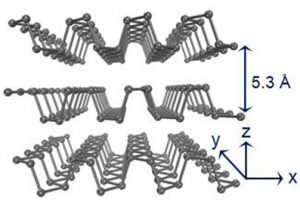 Phosphorus: Two-dimensional materials exhibit diverse electronic and optical properties, ranging from semimetallic graphene, narrow bandgap black phosphorus (BP), and semiconducting transition metal dichalcogenides (TMDC) to the insulating hexagonal boron nitride (hBN). The plethora of two-dimensional materials and their heterostructures, together with their unique electronic band structures and the array of available approaches for enhancing the light–matter interaction, offers the promise of high performance nanoelectronics and nanophotonics technology across a wide range of application domains in communication, sensing and computation.
Phosphorus: Two-dimensional materials exhibit diverse electronic and optical properties, ranging from semimetallic graphene, narrow bandgap black phosphorus (BP), and semiconducting transition metal dichalcogenides (TMDC) to the insulating hexagonal boron nitride (hBN). The plethora of two-dimensional materials and their heterostructures, together with their unique electronic band structures and the array of available approaches for enhancing the light–matter interaction, offers the promise of high performance nanoelectronics and nanophotonics technology across a wide range of application domains in communication, sensing and computation.
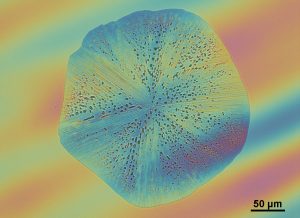 Nonlinear crystalline materials: Many of the highest performing optical systems, such as high speed switches, rely on nonlinear crystalline optical materials (e.g. lithium niobate) for their performance. However, these materials are extremely challenging to integrate into a planar platform, because of their crystalline nature. Specifically, they can suffer from lattice mismatch with the underying Si or III-V wafer, giving rise to de-lamination issues over time. The present effort will explore alternatives to these materials that are more compatible with fabrication and large-scale systems integration.
Nonlinear crystalline materials: Many of the highest performing optical systems, such as high speed switches, rely on nonlinear crystalline optical materials (e.g. lithium niobate) for their performance. However, these materials are extremely challenging to integrate into a planar platform, because of their crystalline nature. Specifically, they can suffer from lattice mismatch with the underying Si or III-V wafer, giving rise to de-lamination issues over time. The present effort will explore alternatives to these materials that are more compatible with fabrication and large-scale systems integration.
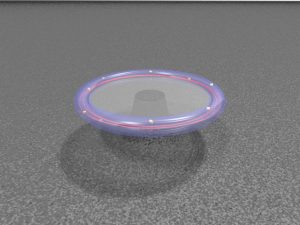 Plasmonics: Plasmonic materials offer several advantages over conventional optical materials (such as silicon and silicon dioxide) such as optical field enhancement and improved mode confinement. However, these improvements come at the cost of an increased optical loss. By creating hybrid plasmonic-photonic materials and devices, this effort strives to find a balance between these two material systems.
Plasmonics: Plasmonic materials offer several advantages over conventional optical materials (such as silicon and silicon dioxide) such as optical field enhancement and improved mode confinement. However, these improvements come at the cost of an increased optical loss. By creating hybrid plasmonic-photonic materials and devices, this effort strives to find a balance between these two material systems.
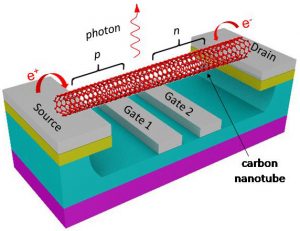 Single Photon Sources: Defects provide the basis for single photon emission in many materials, including diamond, h-BN, WSe2, and carbon nanotubes. These defects trap excitons, essentially reducing the material to a one dimensional system. The trapped excitons are spectrally red-shifted from the continuum of optical transitions, which enables from the continuum of electronic states/optical transition to be spectrally filtered out from the single photon emission. Here, we explore the effects of defects on single photon emission in various low-dimensional materials.
Single Photon Sources: Defects provide the basis for single photon emission in many materials, including diamond, h-BN, WSe2, and carbon nanotubes. These defects trap excitons, essentially reducing the material to a one dimensional system. The trapped excitons are spectrally red-shifted from the continuum of optical transitions, which enables from the continuum of electronic states/optical transition to be spectrally filtered out from the single photon emission. Here, we explore the effects of defects on single photon emission in various low-dimensional materials.
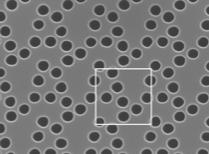 Thermal Homeostasis: Nanophotonic materials offer a unique approach to provide thermal control strategies for space-borne vehicles. Our approach will use metamaterial and photonic crystal patterning to produce advantageous thermal emission properties in a light-weight platform.
Thermal Homeostasis: Nanophotonic materials offer a unique approach to provide thermal control strategies for space-borne vehicles. Our approach will use metamaterial and photonic crystal patterning to produce advantageous thermal emission properties in a light-weight platform.
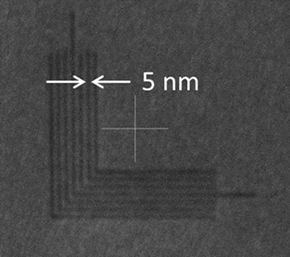 Nanofabrication: When nanostructures with features smaller than certain critical size, new properties are created. By utilizing those properties, devices with new functionality, better performance, and at cost can be made. We are focusing on exploring the limit of nanofabrication technologies and using them to revolutionize nano-photonics.
Nanofabrication: When nanostructures with features smaller than certain critical size, new properties are created. By utilizing those properties, devices with new functionality, better performance, and at cost can be made. We are focusing on exploring the limit of nanofabrication technologies and using them to revolutionize nano-photonics.
Future calls for proposals are anticipated in late 2016. The call will be announced using a range of methods, including social media (Viterbi and ArmaniLab Twitter and Facebook accounts) and the USC Viterbi Research Gist. Useful information is located on the New Projects webpage.
